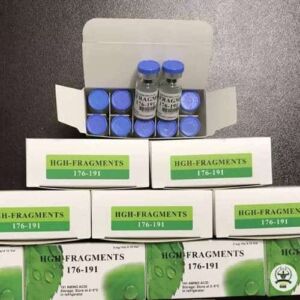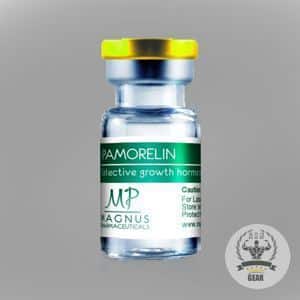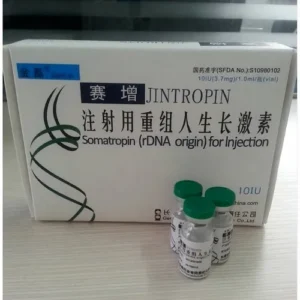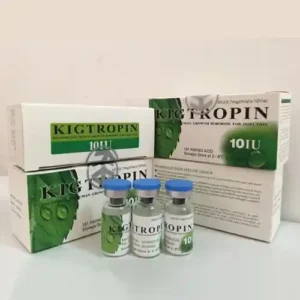Introduction to HGH Fragment
Human Growth Hormone (HGH), a term that often echoes in fitness and medical science, has been a subject of intrigue and extensive study. In recent years, a specific segment of this hormone, known as HGH Fragment or HGH Fragment 176, has garnered significant attention. This fragment, a shorter version of the HGH peptide, is not just a mere slice of the original hormone but a distinct entity with unique properties and potential applications.
The journey of HGH Fragment begins with understanding its origin – the Human Growth Hormone. HGH, produced in the pituitary gland, plays a crucial role in growth, body composition, cell repair, and metabolism. In their quest to harness these benefits, scientists stumbled upon a remarkable fragment of this hormone, which displayed distinct characteristics.
As we delve deeper into HGH Peptide Fragment, we find ourselves at the cusp of a new horizon in therapeutic and performance-enhancing applications. This comprehensive guide aims to unravel the mysteries of HGH Fragment, shedding light on its functions, benefits, potential risks, and the future it holds in medicine and sports.
What is HGH Fragment and How Does it Differ from Regular HGH?
HGH Fragment, particularly the HGH Fragment 176-191 variant, is a synthetic peptide that mimics a specific portion of the human growth hormone molecule. This segment, located at the tail end of the HGH molecule, has been the subject of intense research due to its unique properties.
Unlike the whole HGH molecule, which influences a wide range of growth-related processes in the body, HGH Fragment focuses primarily on fat metabolism. This targeted approach marks the fundamental difference between HGH Fragment and regular HGH. While traditional HGH plays a pivotal role in growth and development, muscle growth, and cell repair, HGH Fragment zeroes in on adipose tissue, making it a point of interest for weight loss and body composition studies.
Understanding this distinction is crucial for anyone considering the use of HGH weight loss Fragment. It’s not a general growth stimulator but a specialized tool that could offer targeted benefits, particularly in fat reduction.
Can HGH Fragment Help in Muscle Building?
The relationship between HGH Fragment and muscle building is a topic of ongoing research and debate. While the primary function of this peptide is not directly linked to muscle growth – a trait more characteristic of the full HGH molecule – there may be indirect benefits to muscle building.
HGH Fragment’s role in fat metabolism could contribute to a more favorable environment for muscle growth. By potentially reducing body fat, it might aid in better muscle definition and efficiency. However, it’s important to note that this does not equate to the muscle-building properties of the complete HGH hormone. Users looking for significant muscle mass gains might need help finding HGH Fragment to be a standalone solution.
Is HGH Fragment Effective for Weight Loss?
One of the most intriguing aspects of HGH Fragment is its potential effectiveness in weight loss. This peptide has shown promise in targeting and reducing adipose tissue, a key factor in weight management. Studies suggest that HGH Fragment can enhance lipolysis, the process of breaking down fats, while inhibiting lipogenesis, the formation of fatty acids and glycerol.
This dual-action mechanism positions Fragment HGH as a potentially powerful tool for those looking to reduce body fat. However, it’s crucial to approach these findings with a balanced perspective. Weight loss and body composition are complex issues influenced by a myriad of factors, including diet, exercise, and overall lifestyle. HGH Fragment might offer support in this journey, but it’s not a magic bullet.
Are There Any Side Effects Associated with HGH Fragment?
Like any peptide or hormone, HGH 176-191 Fragment comes with considerations and potential side effects. Users should be aware of these risks to make informed decisions. Some reported side effects include irritation at the injection site, headaches, and possible changes in blood sugar levels. It’s also important to consider the long-term implications, as the research on prolonged use of HGH Fragment is still evolving.
Given these potential risks, it’s imperative for individuals to consult with healthcare professionals before starting any regimen involving HGH Fragment. This ensures a safe approach tailored to the individual’s health profile and needs.
How is HGH Fragment Administered for Optimal Results?
The administration of HGH Fragment is a critical factor in harnessing its potential benefits. Typically, this peptide is administered via subcutaneous injections, a method that allows for direct absorption into the bloodstream. The dosage and frequency of these injections vary, often depending on individual goals and medical advice.
Users need to follow a structured protocol, ideally under the guidance of a healthcare professional. This ensures not only the effectiveness of the treatment but also minimizes potential risks and side effects.
The Future of HGH Fragment in Medicine and Sports
The future of HGH 176-191 Fragment in both medicine and sports is an area ripe with possibilities. As research continues to evolve, we may see more defined and regulated uses of this peptide in various therapeutic contexts. Its potential in aiding weight loss, improving body composition, and possibly supporting recovery processes makes it a subject of interest for both medical professionals and athletes.
However, with this potential comes the need for caution. The ethical and health implications of HGH Fragment use in sports, its impact on fair competition, and the long-term health effects on users are areas that require careful consideration and ongoing research.
In medicine, the targeted action of HGH Fragment could offer new avenues for treating conditions related to metabolism and fat accumulation. As our understanding of this peptide deepens, so too will its applications, making it a fascinating area to watch in the coming years.







Reviews
There are no reviews yet.